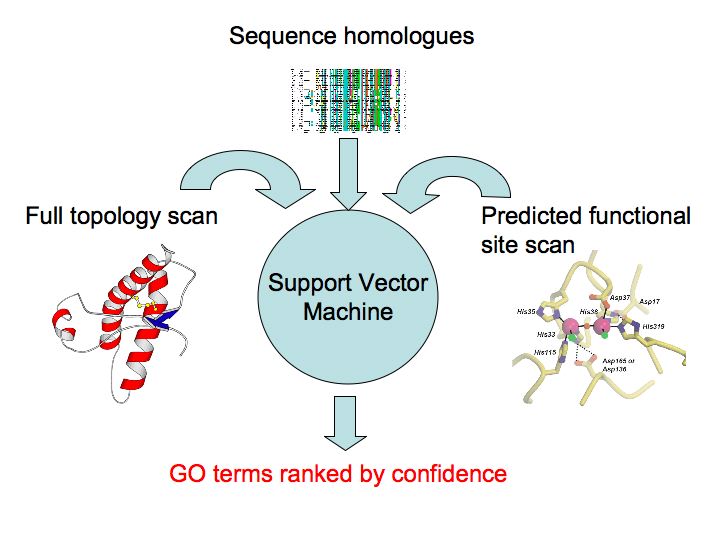|
|
|
|
| GO | Description | Minimum E-value | Number of hits | Top PDB hit |
|---|
| GO:0003796 | lysozyme activity | 7.16e-05 | 5 | 2GV0 |
| GO:0005576 | extracellular region | 7.16e-05 | 16 | 2GV0 |
| GO:0042742 | defense response to bacterium | 7.16e-05 | 4 | 2GV0 |
| GO:0016798 | hydrolase activity, acting on glycosyl bonds | 7.16e-05 | 9 | 2GV0 |
| GO:0019835 | cytolysis | 7.16e-05 | 3 | 2GV0 |
| GO:0008152 | metabolic process | 7.16e-05 | 20 | 2GV0 |
| GO:0016787 | hydrolase activity | 7.16e-05 | 19 | 2GV0 |
| GO:0003824 | catalytic activity | 7.16e-05 | 19 | 2GV0 |
| GO:0016998 | cell wall catabolic process | 7.16e-05 | 5 | 2GV0 |
| GO:0016021 | integral to membrane | 0.000517 | 5 | 1DL2 |
| GO:0005509 | calcium ion binding | 0.000517 | 7 | 1DL2 |
| GO:0006487 | protein amino acid N-linked glycosylation | 0.000517 | 1 | 1DL2 |
| GO:0030433 | ER-associated protein catabolic process | 0.000517 | 1 | 1DL2 |
| GO:0016020 | membrane | 0.000517 | 13 | 1DL2 |
| GO:0004571 | mannosyl-oligosaccharide 1,2-alpha-mannosidase activity | 0.000517 | 1 | 1DL2 |
| GO:0005783 | endoplasmic reticulum | 0.000517 | 2 | 1DL2 |
| GO:0005789 | endoplasmic reticulum membrane | 0.000517 | 1 | 1DL2 |
| GO:0004553 | hydrolase activity, hydrolyzing O-glycosyl compounds | 0.000517 | 7 | 1UPS |
| GO:0005975 | carbohydrate metabolic process | 0.000517 | 12 | 1UPS |
| GO:0030145 | manganese ion binding | 0.00093 | 3 | 2LTN |
| GO:0005529 | sugar binding | 0.00093 | 3 | 2LTN |
|
|
|



